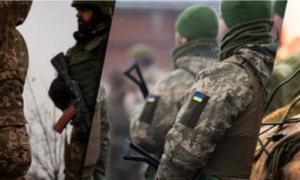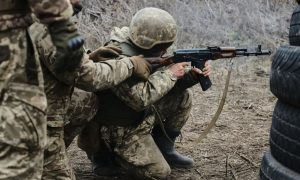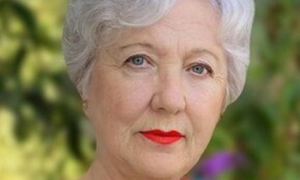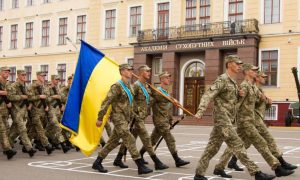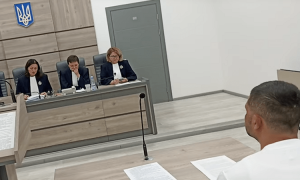Last week, the Washington Post obtained a letter from the U.S. to the United Nations warning of further Russian human rights abuses against vulnerable groups in Ukraine, including religious minorities. While the letter did not specify which religious groups would be targeted, it alleged that “Russian forces are creating lists of identified Ukrainians to be killed or sent to camps following a military occupation.”

By far, the majority religious tradition in Ukraine is Orthodox Christianity (78 percent of the population, according to a 2017 Pew report). Religious minorities include Greek Catholics (10 percent), Protestant Christians (1-2.5 percent), as well as Muslims, Jews, Buddhists, Roman Catholics, and Pagans. There is also a small number of Jehovah’s Witnesses and Latter-day Saints. More than 13 percent of the illegally annexed Crimea is composed of Tatar Muslims. As the long shadow of Russia falls on Ukraine, these religious minorities are among those who are most at risk if Russia’s military campaign succeeds.
For many in Central and Eastern Europe, this Russian “hit list” may evoke the terrifying stories of the NKVD—the Soviet security forces—banging on the door at night to take family members away, never to be seen again. Only after the collapse of the Soviet Union were many people able to access documentation regarding the death of their relatives in prisons, labor camps, or at mass execution sites. That trauma is still powerful in many Eastern European families. My own Polish great-grandfather was taken away in 1945 to perish, as we later found out, in a prison where he was placed on unspecified charges, most likely related to his visits to France in the pre-war period. Those who belong to one of the groups listed in the U.S. letter must be reading it with utmost anxiety.
Ukraine legally guarantees the freedom of religion in its constitution, though religion in the country is not without tension. The country’s Orthodox Christian majority is largely split between two factions: In 2018, the Orthodox Church of Ukraine (OCU) formed, with its leadership in Kyiv and independent recognition followed from the ecumenical patriarch of Constantinople. The OCU formation only deepened the split with the Ukrainian Orthodox Church (UOC), which is under the authority of the patriarch of Moscow. (Both factions in Ukraine have condemned Russia’s invasion.) Moreover, for religious minorities, there are many reports of local authorities denying religious minorities permits to build houses of worship. The nation’s legacy of antisemitism also continues, even under a Jewish president and prime minister, as Jewish-owned buildings are still frequently vandalized. Tatar Muslims also continue to face discrimination.
Some scholars argue that the rise in religious nationalism in Ukraine has contributed to a decrease in religious tolerance. Others, like Mykhaylo Yakubovych, a postdoctoral researcher at Freiburg University in Germany and an associate professor of religious studies at the National University of Ostroh Academy in Ukraine, say that the situation of religious minorities has improved. He wrote to me via Facebook Messenger to say, “In contrast to many other post-Soviet states, as well as some Central European countries like Hungary or Poland, Ukraine made substantial progress [on protecting religious minorities].” He also commented that the tension between the nation’s Orthodox factions, the OCU and UOC, is political, rather than strictly religious. His opinion is aligned with that of Metropolitan Epiphanius, the leader of the OCU, who wrote in a recent statement, “Ukraine is proud of interfaith and interethnic peace. No matter how hard the Kremlin tried to inflame the [pro-Russian] opposition over the years, it failed.”
While we can’t predict the future, the past can be a good indicator of how Russia handles religious minorities. In 2017, the United States Commission on International Religious Freedom listed Russia as a “country of particular concern” for creating an increasingly repressive environment for religious minorities. While Ukraine’s approach may not be ideal, it is legally framed in a way that has much more in common with how minorities are treated in the West; the constitutionally guaranteed freedom of religion is central to the existence of religious diversity. In the Russia-controlled areas of Donetsk and Luhansk, the authorities have continued to exert pressure on minority religious groups. They are now required to re-register under harsh Russian law that discourages or prevents recognition of many religious minorities. Many of them refuse to re-register, thereby losing the legal status and protection they enjoyed under Ukrainian law. Strikingly, among these groups is also the OCU, the newly formed Ukrainian Orthodox church, labeled by the Moscow Patriarchate as “schismatic.”
Russia’s capture of Crimea is also illustrative of what could happen now in Ukraine. In the summer of 2003, I stood on the shores of the Kerch Strait, at the easternmost tip of the Crimean Peninsula, looking across the water at the shimmering Caucasus Mountains on the Russian side. At the time, the Kerch Strait was not only a boundary between Europe and Asia, but also a still-undisputed border between Ukraine and Russia. In the same year, a bilateral agreement signed between the two countries guaranteed each other’s freedom of navigation in the Kerch Strait. As such, that place was not only a border between two continents but also a meeting place of two countries.
That summer, I was on a backpacking trip to Ukraine—my native Poland’s geopolitical neighbor—with my college friends. Empires had come and gone in Ukraine, and they all left behind cultural sediment: tombs, places of worship, and inscriptions on walls. We took a train to Odessa, the gateway city to the Crimean Peninsula, itself an important site connecting Europe to the Silk Road, with monuments of the ancient Scythian cultures, the Khazar Khanate, the Byzantine, Mongol, and Ottoman Empires. Historical and cultural sites that were particularly attractive to me were connected to religious traditions I would later study and teach: Islam and Judaism.
Like in the rest of the country, hospitality was clearly helping many locals in Crimea get by economically. In the rented rooms where we stayed, we talked to our Tatar and Uzbek Muslim hosts in a mix of Polish Russian, and broken Ukrainian, about our commonalities and differences. Now such a trip could never take place. After the 2014 illegal annexation of the Crimean Peninsula by Russia, foreign tourism has all but disappeared from Crimea, a once-popular destination given its ancient monuments and the Black Sea beaches, leaving its economy severely weakened.
After the intensification of fighting in eastern Ukraine, and now the entire country, the situation in annexed Crimea has largely faded from political debate in the West, but it remains a stark warning for what might be about to happen in the rest of Ukraine. The tipoff about the impending persecution of Ukrainian religious minorities in the U.S. letter is plausible, given the Russian authorities’ hostile treatment of the Tatar Muslim minority in the Eastern Ukraine and in annexed Crimea. Muslims have been subject to surveillance, harassment, intimidation, threats, intrusive and unlawful searches of their homes, physical attacks, and forced disappearances. The Mejlis, the highest self-governing body of the Crimean Tatars, was forcibly disbanded in 2016 amid an unfounded allegation of “extremism.”
Historically, Tatar Muslims have had reasons to fear Russian annexation, as they have long been averse to Russian rule. After the first Russian annexation of Crimea in 1783, 300,000 Tatars emigrated to the Ottoman Empire. Under Stalin’s rule, in May 1944, the entire Tatar Muslim ethnic group was deported from Crimea to Central Asia on charges of national treason (as some Tatars collaborated with the Nazis). The rounding up of the 200,000 people—men, women, children, and the elderly—took three days. Their homes and belongings were confiscated by the Soviet state. Historians estimate that between 18 and 45 percent of those 200,000 died in exile, due to starvation, forced labor, diseases, and cold. Only in 1989, under Gorbachev, were the Tatars legally allowed to return to Crimea, but the process of their reassimilation has been painfully slow and they were not granted fair reparations.
Likewise, the history of Judaism in what is now Ukraine is more than 1,000 years old and overshadowed by persecution and threat of pogroms and exile. And yet, at times the Jewish communities in Ukraine have flourished. Hasidism, an important mystical current of Judaism, was born in what was then known as the Pale of Settlement: a stretch of land between modern day Lithuania and Romania. After the genocide of the World War II, the surviving Jewish population in Ukraine gradually declined, with many Ukrainian Jews emigrating to Israel and the United States.
While antisemitism has remained a problem in Ukraine, there is now a legal ban on antisemitic behaviors in the country. However, political upheavals have always been dangerous for Jewish communities in Eastern Europe. They have caused intergenerational trauma in Ukrainian Jews who are sensing a shadow of antisemitic violence looming over their community now. An Odessa rabbi recently bought enough canned goods to last the entire year and hired Israeli security guards. Many Ukrainian Jews have already evacuated to Israel.
There is no space for democracy or religious minorities in the Russian vision of Ukraine as a country that is essentially the same as Russia. They will be seen as a threat to a manufactured, ultimately controllable homogeneity. As democracy is at grave risk in Ukraine right now, minorities are likely to be the first to feel the brunt of Russian repressions, heralded by the persecution of Tatar Muslims in Crimea and eastern Ukraine. The protection of the rights of religious minorities is often the litmus test for democracy. It is a test that the region cannot fail without dire consequences.
